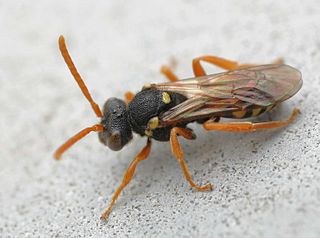
Nomadinae is a subfamily of bees in the family Apidae. They are known commonly as cuckoo bees.

The cosmopolitan bee genus Ceratina, often referred to as small carpenter bees, is the sole lineage of the tribe Ceratinini, and is not closely related to the more familiar carpenter bees. The genus presently contains over 300 species in 23 subgenera. They make nests in dead wood, stems, or pith, and while many are solitary, a number are subsocial, with mothers caring for their larvae, and in a few cases where multiple females are found in a single nest, daughters or sisters may form very small, weakly eusocial colonies. One species is unique for having both social and asocial populations, Ceratina australensis, which exhibits all of the pre-adaptations for successful group living. This species is socially polymorphic with both solitary and social nests collected in sympatry. Social colonies in that species consist of two foundresses, one contributing both foraging and reproductive effort and the second which remains at the nest as a passive guard. Cooperative nesting provides no overt reproductive benefits over solitary nesting in this population, although brood survival tends to be greater in social colonies. Maternal longevity, subsociality and bivoltine nesting phenology in this species favour colony formation, while dispersal habits and offspring longevity may inhibit more frequent social nesting in this and other ceratinines.

Lestrimelitta is a genus of stingless bees found in the Neotropics, from Mexico to Brazil and Argentina, with about 20 known species. They are small, shining black species from 4 to 7 mm in length, with rounded heads and reduced pollen baskets. Unlike most eusocial bees, they do not gather their own pollen and nectar from flowers, thus are not pollinators, but instead they invade the colonies of other stingless bee species and rob their pollen and honey stores. They do not initiate their own nests, but they will "evict" another stingless bee colony from its nest, and convert the pre-existing nest to house their own colony.
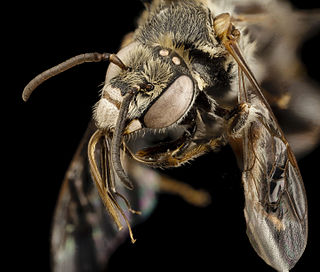
The Emphorini are a tribe of apid bees.
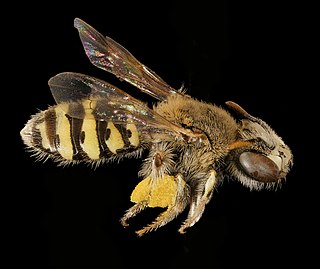
Calliopsini is a tribe of mining bees in the family Andrenidae. There are at least 120 described species in Calliopsini.

Biastini is a tribe of cuckoo bees in the family Apidae. There are at least 3 genera and about 12 described species in Biastini.
Megandrena is a genus of mining bees in the family Andrenidae. There are at least two described species in Megandrena.
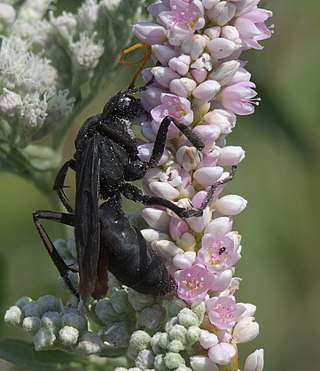
Entypus is a genus of spider wasps in the family Pompilidae. There are at least 40 described species in Entypus.
Rhopalolemma rotundiceps is a species of cuckoo bee in the family Apidae. It is found in North America.

Triepeolus kathrynae is a species of cuckoo bee in the family Apidae. It is found in Central America and North America.
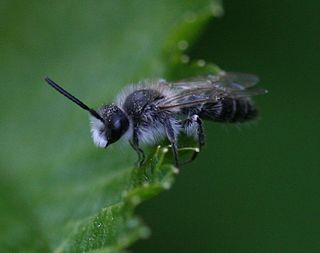
The bearded miner bee is a species of miner bee in the family Andrenidae. It is found in Europe and Northern Asia and North America. Other common names include the long-lipped andrena and the sandpit mining bee.
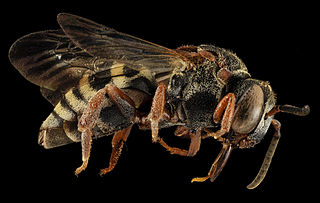
Epeolus scutellaris is a species of cuckoo bee in the family Apidae. It is found in Central America and North America.
Mexalictus is a genus of sweat bees in the family Halictidae. There are more than 20 described species in Mexalictus.

Hoplitis is a genus of bees in the family Megachilidae. There are more than 380 described species in Hoplitis.
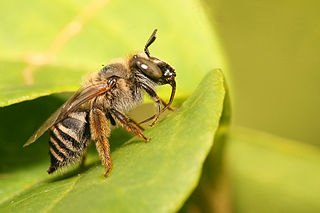
Tetraloniella is a genus of long-horned bees in the family Apidae. There are more than 100 described species in Tetraloniella with most being from North America
Syntrichalonia is a genus of exquisite long-horned bees in the family Apidae. There are at least two described species in Syntrichalonia.

Xenoglossa is a genus of large squash bees in the family Apidae. There are about 11 described species in Xenoglossa.
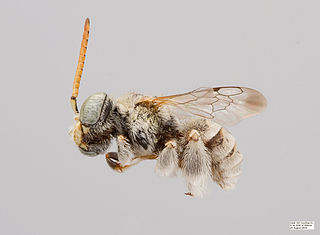
Anthophorula is a genus of bees in the family Apidae. There are more than 60 described species in Anthophorula.

Hexepeolus is a genus of cuckoo bees in the family Apidae. There are at least two described species in Hexepeolus. It is the only genus in the tribe Hexepeolini.

Ancyloscelis is a genus of bees belonging to the family Apidae.















